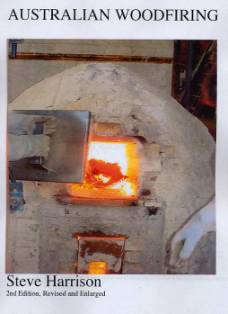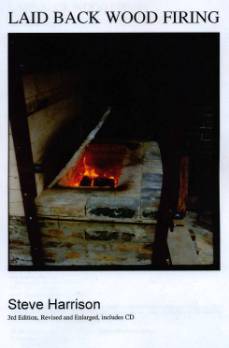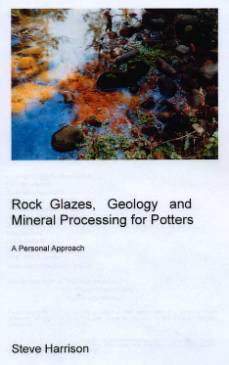
AUSTRALIAN
WOODFIRING
122
pages, 85 images & 13 kiln plans.
This book is a personal interpretation of the development of stoneware
wood firing technology as practised by artist-potters in Australia
during the fourty years from the early nineteen fifties through to the
early nineteen nineties. It deals with the history, the major
personalities and their influences, the technologies used and their
origins, the kiln designs evolved and the firing techniques
developed.An
important factor in the development of wood firing by artist potters
during this period was the particular nature of the Australian native
clays and timbers used by the pioneering figures, and their attempts to
come to terms with the technology needed to utilise these endemic
resources aesthetically. The evolution of new styles has been based on
imported European and Oriental archetypes interfacing with Australian
native materials and social attitudes.Up to the present time there has
not been a concerted attempt to detail the technology of stoneware wood
firing. The central theme of this book is the analysis of the
technologies involved in the creative wood firing process. I have been
lucky enough to accumulate during my working lifetime, numerous
illustrations and photographs of a variety of wood fired kilns, which,
to the best of my knowledge are collected together and published here
for the first time.
LAID
BACK WOOD FIRING
58
pages, 40 illustrations, 12 kiln plans, + CD with 120
colour images.
This little booklet was first published in 1977 in an edition of 500
copies in a green cover and reprinted soon after in 1978 in an edition
of 3500 in a blue cover. This edition has been updated, revised and
considerably enlarged, in fact almost triple the original
publication.Although it is my intention that it should still remain a
small kiln-side handbook as a guide for the potter who has not fired a
down draught fire box (Bourry) kiln before, or has little experience of
it. If you have not seen a kiln with a down draught firebox before it
may seem strange to be told that the fire burns 'up side down'. The
wood
being introduced at the top of the firebox, the fire is suspended half
way up in the air, and the flames leaving at the bottom to pass into
the
kiln. This is however exactly the case when the fire box is burning at
full fire and I therefore felt that a small booklet that introduced and
explained the concept might have some currency. That was a quarter of a
century ago and it seems I was right. This little book (as it has now
become) also attempts to shed some light on the history and development
of the up side down fire box, although only briefly, as its main
function is as a guide on how to understand the firebox and offer
possible explanations as to what may happen to you during a firing and
what you might do about it to keep control of the process.I also offer
a
few kiln plans at the end to illustrate the kinds of kilns that might
be
fired by the down draught firebox. This section is by no means
exhaustive. It is not meant to be a step by step guide on how to cut
and
lay firebricks
ROCK
GLAZES
54
pages, 37 images, 12 illustrations.
My principal reason for collecting and processing my own raw materials,
an interest that I have pursued over the last 30 years, is
two-fold.Firstly, I have a deeply held belief in a theory of locality,
which I call the 'location specific event' which, if you have read any
of my other writings, you will be familiar with (see Australian
Woodfiring). So there is no need to elaborate on it here.Secondly, it
is
to strike a blow against the trend towards a global pottery style,
where
a majority of potters around the world end up using all the same
ceramic
ingredients. An oligopoly of ceramic material manufacturers using the
same colours, frits etc. China clay is sourced from New Zealand,
bentonite from Mexico, nepheline syenite from Canada. Where one
ingredient is found to be very good, it is shipped all over the world
and every ones work has the same basic look and feel. I am happy to
seek
out 'inferior'? local raw ingredients for my pots, for my food and for
my wine. I think its called character. It certainly won't be the best
in
the world, it may not even be very good in comparison to the 'best' but
it's what happens here, with this stuff. It's my belief that if you
work with a material long enough you will find a way to express its
personality, and beauty. Some of the chapters include; A Brief
Introduction to Geology for Potters,An Overview of Rock Crushers,
Flotation-A Remarkable Method Of Refining Useful Minerals. Empirical
Blending, a fast method of establishing the alumina silica ratio of
your
rock, and finding the 'sweet-spot' recipe that will give the best
result
from your rock.Basic Glaze Chemistry and an A3, fold out, colour coded,
Periodic Table.